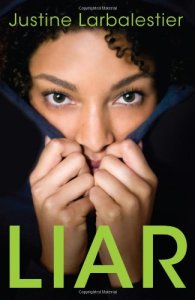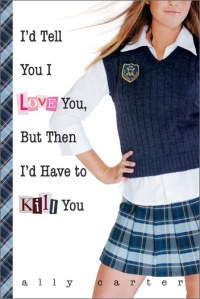 Larbalestier, Justine. (2009). Liar. NewYork: Bloomsbury.
Larbalestier, Justine. (2009). Liar. NewYork: Bloomsbury.
Plot Summary/Critical Evaluation:
Everybody lies. We say that we adore gifts that we hate, profess delight in meals that are lacking, and assure our parents that yes, our homework is all done. For most of us, the lying ends there. Not for Micah though, she doesn’t just tell the occasional white lie, she’s a compulsive liar. “But [she’s] going to stop.” She has to. So pay attention, because she’s going to tell you the truth and she’s “going to tell it straight. No lies, no omissions.”
Layer by layer, Larbalestier peels back Micah’s deceptions to expose the truth and banish the lies, but they are rarely what you’d expected. Micah doesn’t pretend to know bands that she has never heard of, claim to own trophies that she never earned, or fake an illness to get out of class. Rather, she decides to wear a Venetian mask to school – and forges a doctor’s note to justify it.
There is a peculiar and unexpected honesty in Micah’s fibs. False as they are, they also let her push against the edges of conformity and let Micah be herself without forcing her to claim to know who she is when she doesn’t yet. At the same time, they also act as role to play and hide behind – even from herself.
When her friend Zach disappears, however, Micah discovers that her lies might finally cost her more than just the goodwill of her peers. No longer simply a cathartic confession of past sins, Liar quickly becomes an especially twisted kind of mystery, with Micah’s admissions of falsehood and guilt taking on the urgency of someone both digging for the truth and fighting for survival.
The twists and turns that Micah’s story takes also do more than keep readers on their toes. Because of the way that the story is structured, the lies rely as much on our assumptions of what constitutes normalcy as they do on Micah’s audacity. It’s beyond brilliant, exceptionally appropriate in a novel for young adults, and Larbalestier deserves nothing but praise for pulling it off.
This is a novel that, like Micah, refuses to be boxed in. It’s not simply that it flirts with genres the same way that Micah plays with her identity. Rather, like Micah herself, how you classify it and how much you enjoy it will greatly depend on which parts of her story you choose to believe.
Larbalestier’s clear understanding of the fandom traditions of genre fiction bleed onto the page, demanding that the conversation expand beyond the reading of the book itself. Liar is a novel that is meant to be talked about, it’s value and interest is fundamentally tied to comparing notes and possibilities afterwards. The obvious conundrum is that spoilers for a book such as this – even mild ones – would also impose points of view that would limit the discussions afterwards.
So when I tell you that you must read it – and now – know that I say this not because it is lacking flaws, but because I am eager to hear what you thought of it.
Reader’s Annotation:
Everybody lies – sometimes. Micah lies all the time. She’s going to tell you the truth though, so listen up.
Author Information:
@JustineLavaworm
Genre:
Science Fiction (but that is my opinion. I assure you that you may have a completely different one)
Booktalking Ideas:
This is actually a very difficult book to talk up, for the reasons already mentioned in the review. Most shorter book talks can simply focus on the idea of the unreliable narrator. Longer ones will have to try to bring in mild spoilers from the first few pages – Zach’s disappearance being on of the major ones.
Reading Level/Target Age:
5th grade/14-18
Potential Controversy:
Micah is bisexual, lies to her parents (duh), sneaks around with her boyfriend, and, well, let’s just say there is a decent amount of violence. I wouldn’t really expect many challenges, however, because I can’t see many people talking about this book with people that have not already read it. Challenges that do come up can be responded to with the fact that the book is meant to be, in part, an exploration of the rationalizations we make for less than moral choices; Micah’s more dubious actions are not condoned by the text.
Reasons for Choosing This Title:
I honestly wasn’t terribly intrigued by the idea of a “psychological thriller” about a teen girl who lies. I have a lot of respect for Larbalestier herself though, based on her posts and tweets, and the book was recommended by a friend. I am very glad I decided to finally read it.
